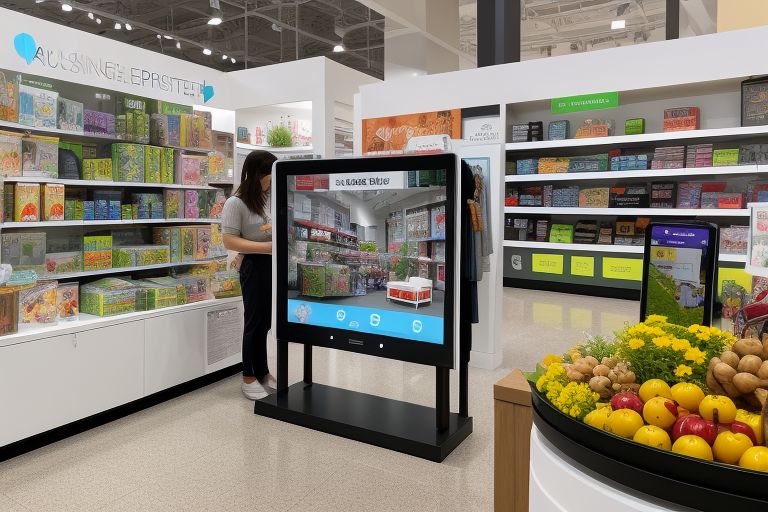Augmented Reality (AR) shopping represents a significant leap forward in the retail industry, offering a transformative experience that bridges the gap between physical and digital shopping realms. As we stand on the cusp of this new frontier, it’s essential to understand how AR technology is reshaping consumer behaviors, enhancing customer engagement, and ultimately redefining the retail landscape.
1. Immersive Product Visualization
At the core of AR shopping is the ability for consumers to visualize products in a highly immersive and interactive manner. Through AR applications, customers can see how furniture looks in their home, how clothes might fit, or how a new shade of paint changes a room’s ambiance without ever leaving their house. This level of interaction not only aids in making more informed purchasing decisions but also significantly enhances the shopping experience.
2. Overcoming Online Shopping Limitations
One of the traditional limitations of online shopping has been the inability to fully appreciate a product’s look and feel. AR technology overcomes this barrier by allowing consumers to interact with virtual representations of products in a real-world context. Whether it’s trying on glasses using a smartphone or placing a virtual sofa in a living room, AR provides a tangible sense of how products fit into consumers’ lives.
3. Personalization and Engagement
AR shopping platforms offer unparalleled opportunities for personalization. By leveraging data on consumer preferences and behaviors, retailers can present personalized AR experiences that cater to individual tastes and needs. This not only increases customer satisfaction but also fosters a deeper connection between brands and their consumers.
4. Streamlining the Path to Purchase
AR technology simplifies the path to purchase by integrating seamlessly into consumers’ shopping journeys. With the ability to scan a product in-store to access detailed information or virtually try products at home, the buying process becomes more efficient and enjoyable. This ease of use can lead to higher conversion rates and increased sales.
5. Enhancing In-Store Experiences
Beyond online shopping, AR enhances in-store experiences by offering interactive elements that engage customers in novel ways. For instance, in-store navigation, product information pop-ups, and virtual try-on zones enrich the shopping experience, making it more informative and entertaining.
6. Challenges and Considerations
While the potential of AR in retail is immense, there are challenges to consider, including technology adoption barriers, privacy concerns, and the need for substantial investment in AR infrastructure. Retailers must navigate these challenges thoughtfully to fully harness the benefits of AR technology.
Conclusion
Augmented Reality shopping marks a pivotal moment in the evolution of the retail industry, offering a blend of engagement, personalization, and innovation. As technology advances and consumer adoption grows, AR has the potential to revolutionize the shopping experience, making it more interactive, convenient, and personalized than ever before. The journey into this new frontier is just beginning, and it promises to reshape the retail landscape in profound ways.


